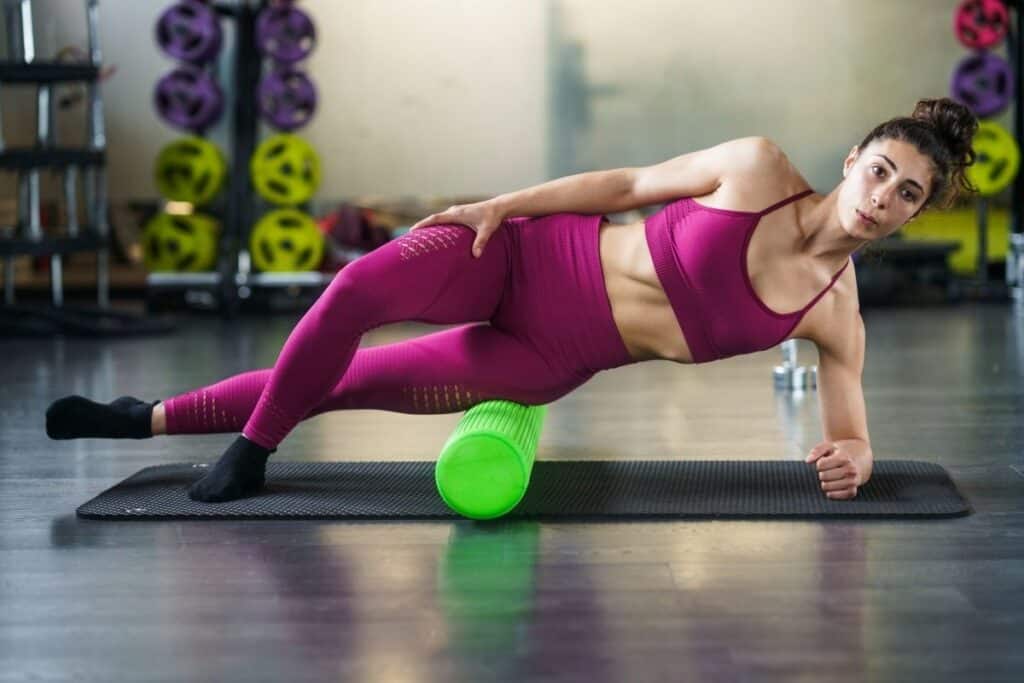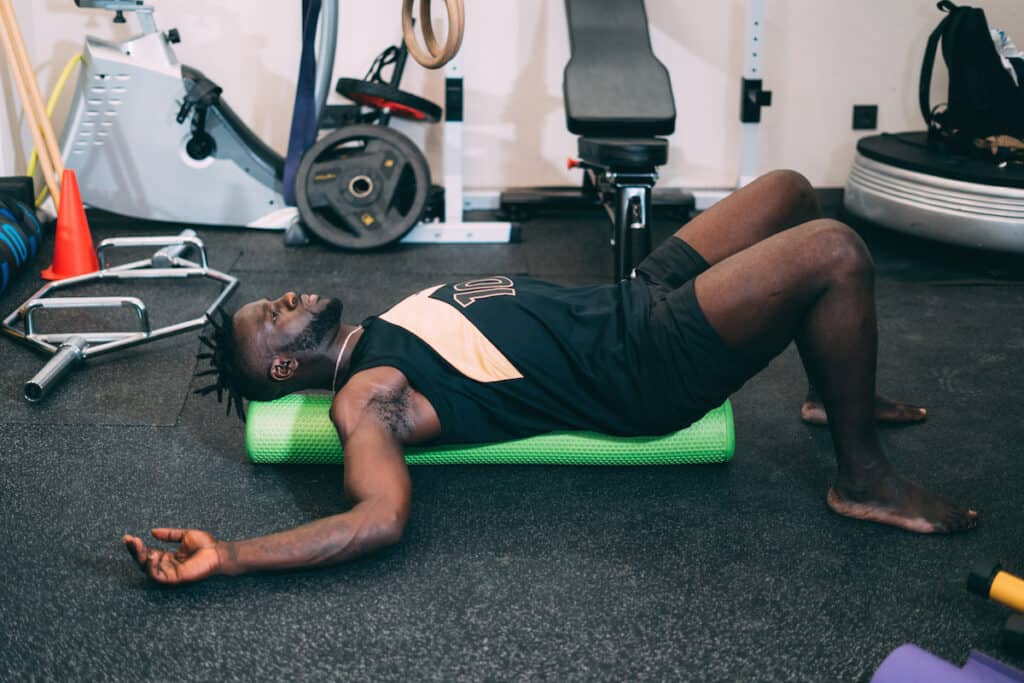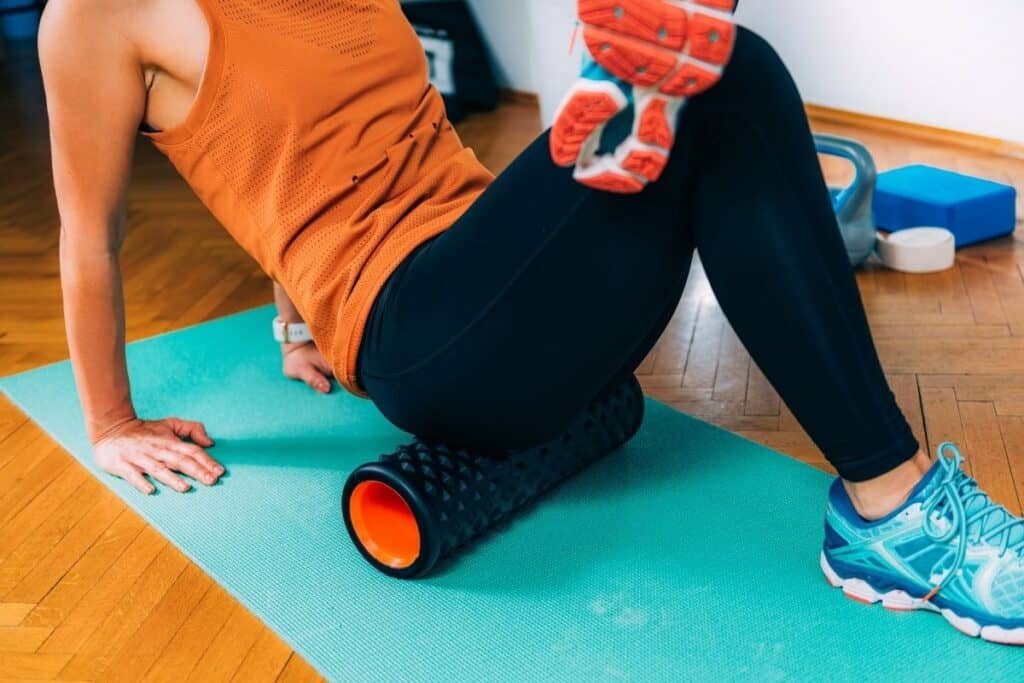Peloton Foam Rolling Classes: Why You Should Be Doing Them
I’ve just updated this post on Peloton foam rolling classes.
Why?
Because Peloton has added a new series of foam roller classes to its Collections.
That is, now when you click on Collections, you’ll see “Foam Rolling with Hannah.”
These are six new foam rolling classes, under the stretching category, for you to take.
This is in addition to the seven other Peloton foam roller classes that instructor Hannah Corbin had previously taught.
Why you want to take foam rolling classes through Peloton
Have you ever tried the Peloton foam roller classes?
Honestly, before I got the Peloton, I’d never even heard about foam rolling or body rolling or knew what a foam roller was.
However, once I bought one and tried a class, I was hooked.
Save this article and we’ll send it to your inbox. Plus, we’ll send you more great links each week.
Simply put when you use a foam roller, you are giving yourself a DIY massage of your sore, knotty muscles.
It’s called myofascial release.
Here is how the Mayo Clinic describes what myofascial release is:
“Myofascial (my-o-FASH-e-ul) release is a manual therapy technique often used in massage. The technique focuses on pain believed to arise from myofascial tissues — the tough membranes that wrap, connect and support your muscles… The focused manual pressure and stretching used in myofascial release therapy loosen up restricted movement, leading indirectly to reduced pain.”
How foam rolling helps with tight muscles
As explained above foam rolling is basically a way for you to do self-myofascial release.
You don’t have to pay a massage therapist to do it for you.
The foam roller helps to loosen tight muscles by going over them again and again.
Think of it like kneading dough.
The longer you work on the dough, the more pliable it becomes.
In addition, when you’re using a foam roller to do myofascial release, you might find sticky, crunchy or knotty spots.
Then, you can stop and really concentrate on loosening them up.
Some of the Peloton mobility classes employ a foam roller.
Foam rolling hurts so good
I’ll admit that it hurts like hell when you’re using a foam roller.
But in a good way.
Like that old song that says “It hurts so good,” it’s the truth with foam rolling.
You’ll feel so much better when you use your foam roller regularly in conjunction with Peloton classes.
The foam roller may just be one of the best Peloton bike accessories you could own and, overall, one of the most important of pieces in your home workout equipment essentials.
Where can I find foam rolling classes on Peloton
Finding the foam roller classes on Peloton is a bit tricky.
One, you can search for them using the Peloton search by typing “foam rollling.”
Or, two, you can look for them under classes.
That is, you’ll choose stretching.
Then, tap the filter and filter by instructor.
Choose Hannah Corbin, since she’s the one doing nearly all the Peloton foam roller classes.
You’ll see the foam rolling classes when you scroll down.
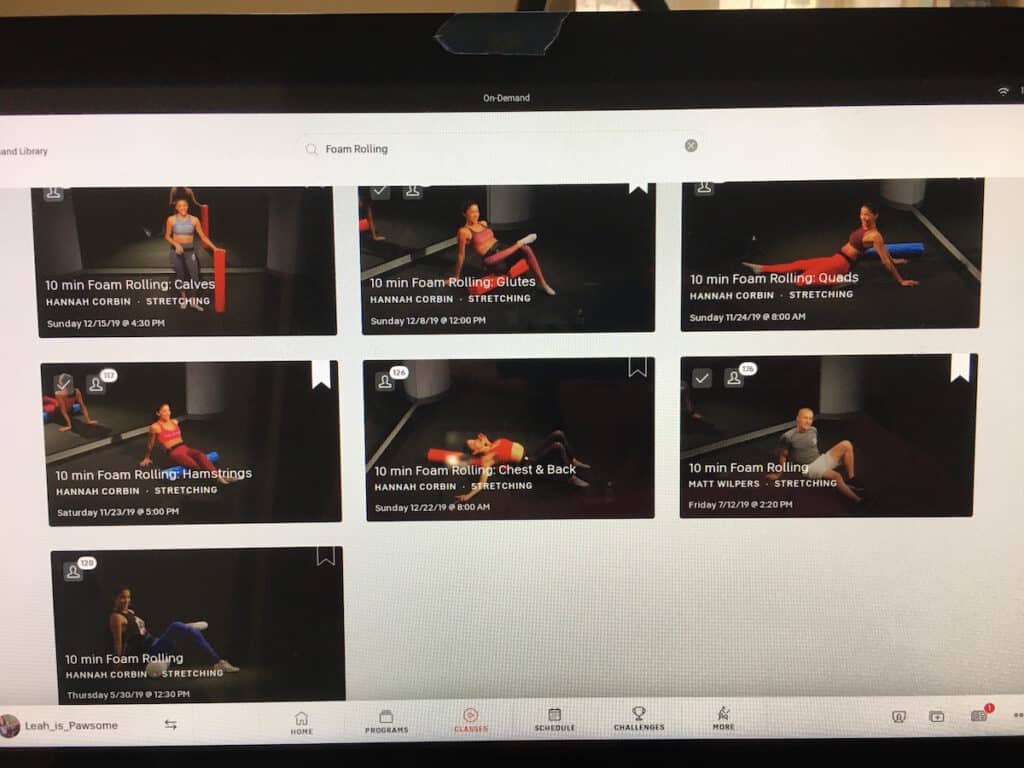
So, where does foam rolling fit in the Peloton class niche?
Well, you’ll find it under stretching.
Who teaches foam roller classes on Peloton
Right now the only Peloton instructor that has foam-rolling classes is Hannah Corbin.
At one time, Matt Wilpers had foam rolling classes.
However, they’ve been purged.
That’s too bad because he’s a big proponent of using the foam roller.
He talks about it all the time in Power Zone classes as a way he deals with sore muscles during Power Zone training.
What are the kinds foam rolling classes I can find on Peloton
The majority of foam rolling classes focus on specific body parts. These include:
- glutes
- hamstrings
- chest
- back
- calves
- quads
Two of the classes are just called “Foam Rolling.”
They cover a lot of territory in not a lot of time.
Truth is most cyclists and runners can get the benefits of foam rolling by focusing on their lower body–glutes, calves, and quads.
So, that’s why most of the foam roller classes you’ll find under stretching classes are working out your lower body.
How to use a foam roller for hips
If you have tight hips like I do, I would recommend taking a foam roller classes that focuses on glutes.
With the ones I’ve taken with Hannah Corbin, she focuses on the sides of your glutes, which basically includes your hips.
Tight glutes wrap around to make for tight hips.
Also, Hannah has a class that is listed as a 10-minute full body stretching class.
However, when you see it, you’ll notice she’s using a foam roller as a prop.
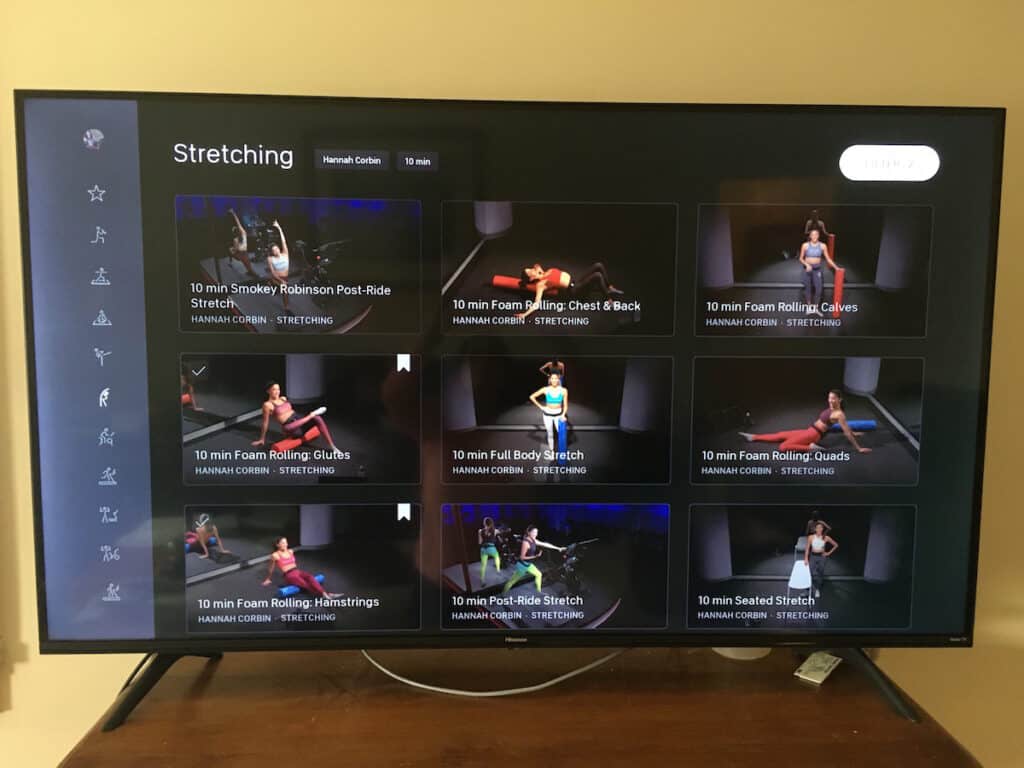
Stretching and foam rolling
I took that class today, and it was like a mix of restorative yoga and foam roller stretching.
One of the stretches was targeted to your hip flexors.
During it she had us laying down on the foam roller, which was perpendicular to our glutes.
Then, you pulled one knee up to you while the other leg was straight.
After that, we tightened and loosened our glute muscle.
And let me tell you–I could feel my hip flexors opening up beautifully. I felt so much looser after class.
What do you need for a foam rolling class
Obviously, you need a foam roller.
But what kind of foam roller?
There are smooth foam rollers, and there are bumpy foam rollers.
There are shorter foam rollers, and there are longer foam rollers.
I have a shorter, smooth foam roller from Gaiam.
It is 18-inches long.
However, Hannah uses a long foam roller.
You can also try therapy balls
In addition to my foam roller, I have something called therapy balls.
I talked about them in my best Peloton accessories post.
These are cork balls that instructor Christine D’Ercole first introduced me to using.
These work in a more intense way for myofascial release on your muscles.
However, they get really deep in there and can help work out knots faster than just the foam roller.
Before I got these cork therapy balls, I would use a softball or tennis ball to roll out knots.
Primarily, I would be rolling my glutes on either the tennis ball or the softball.
In a pinch you can use those as your DIY therapy balls.
What to expect from a foam rolling class
If you decided to take one of Peloton’s foam rolling classes, here’s what you should not expect.
Don’t expect to burn a lot of calories.
Foam rolling or body rolling classes are not about burning calories.
They are about stretching and rolling our your sore muscles.
Calories burned aside, here is what you can expect: being on the ground and going back and forth, over and over the same spot on your body.
You may also find that the foam roller moves as you’re using it, which I find particularly frustrating.
Usually, about halfway through class I’ve noticed that I’ve moved across the room.
So I have to pick up my foam roller and go back to where I started on the floor.
If only someone could invent something that keeps a foam roller in one place while using it–that person would be a genius and a millionaire!
Where can you find a foam roller to buy
Nearly every sporting goods store sells foam rollers.
So do online outlets like Amazon and Target.
Mostly, though, I’ve seen the shorter foam rollers like the Gaiam one I have.
Gaiam’s website sells them, too. It’s part of the Gaiam Recovery Products line.
If you’re interested in buying a longer foam roller like I am, you’ll want to go with one that is either 24 inches or 36 inches long.
From what I’ve read, the three-foot foam rollers works better for rolling out your back.
I guess it all depends on how tall you are.
Final thoughts on foam rolling
Experts say that when you start doing foam-rolling classes, you should begin by using a softer density foam roller.
Then, when your muscles get used to foam rolling, you can transition to a harder, higher density foam rolling.
On the other hand, the high-density foam rollers last longer.
So if you were looking to save money, I’d just buy the high density one and be done with it.
Then you can use that foam roller for years for any foam rolling classes you decide to take.
Here’s my blog post on Peloton pains and discomforts and how you might solve them.

